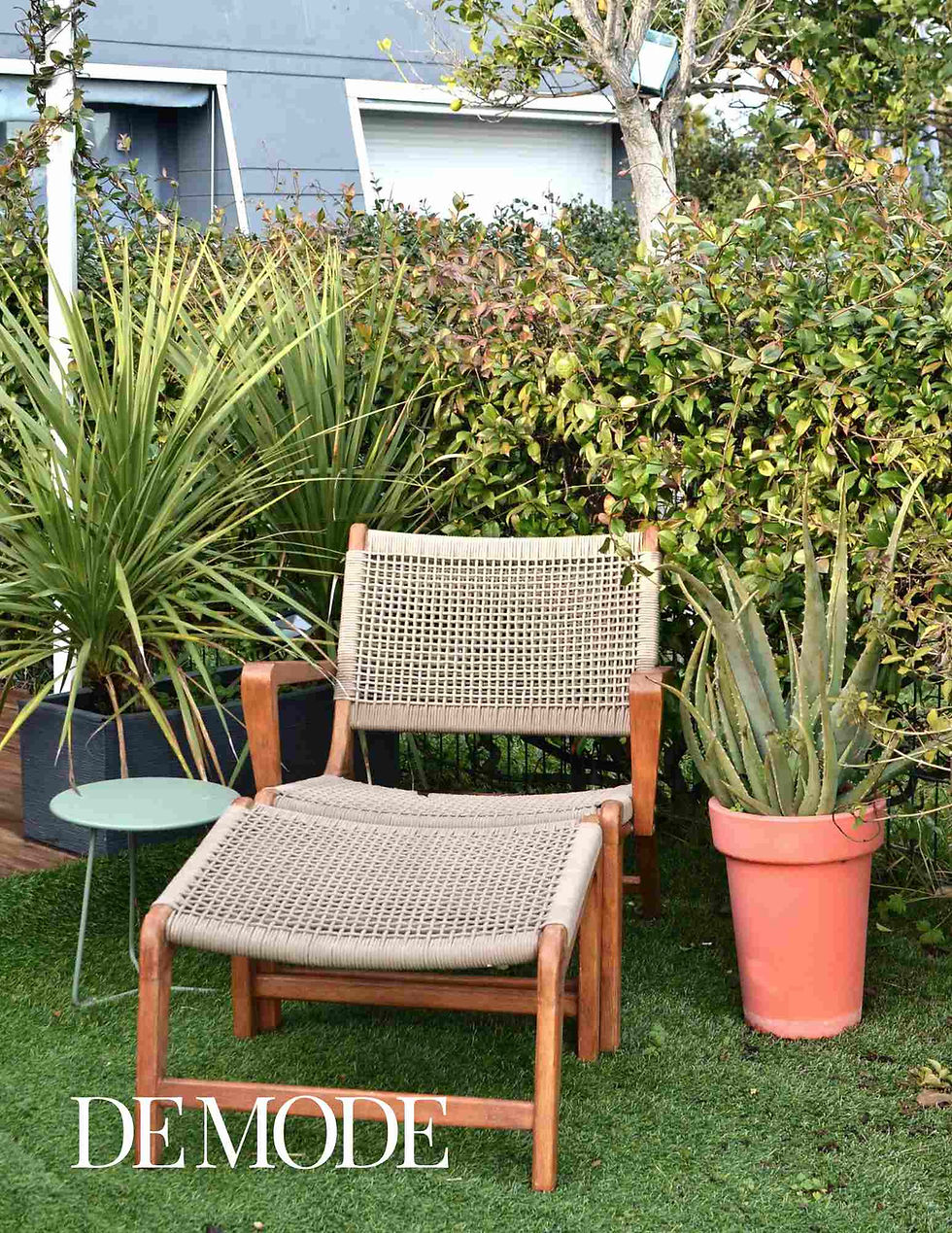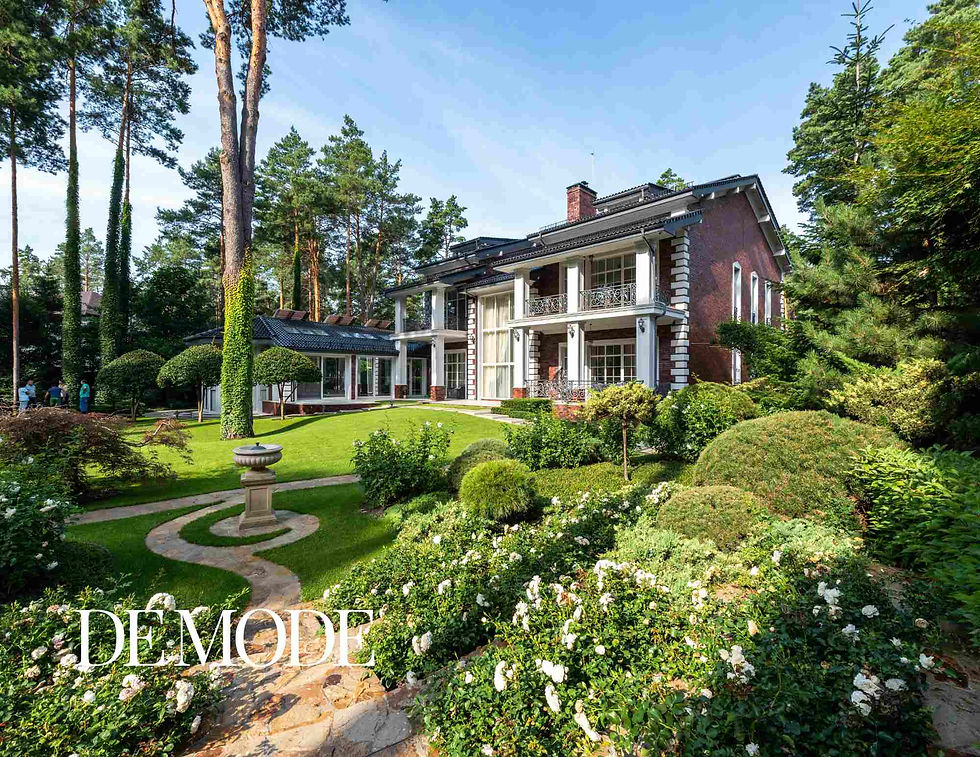ORIGINALLY PUBLISHED IN DE MODE | GARDENING
Article Published on: 05TH JULY 2024 | www.demodemagazine.com
Cottage gardens exude a timeless charm and enchantment that captivate the hearts of gardeners and visitors alike. Rooted in English gardening traditions, these gardens are known for their informal, yet abundantly lush and colorful plantings. Characterized by a blend of flowers, herbs, vegetables, and charming garden structures, cottage gardens offer a romantic and whimsical retreat. This article delves into the key elements of creating a quaint and charming cottage garden, exploring its history, design principles, plant selection, and maintenance practices.
History of Cottage Gardens
Cottage gardens date back to the 16th century in England, where they were originally practical spaces for working-class families. These gardens combined functionality with beauty, featuring a mix of edible and ornamental plants to maximize productivity and aesthetics. Over time, cottage gardens evolved to emphasize more ornamental elements, influenced by the romantic movement of the 19th century. Today, they are celebrated for their natural beauty, density of plantings, and the cozy, nostalgic atmosphere they create.

Key Elements of Cottage Gardens
Informal Design: Cottage gardens are known for their relaxed, informal layout. Paths meander through densely planted beds, creating a sense of exploration and discovery. The lack of rigid structure allows for a more natural and spontaneous appearance.
Abundance and Diversity: A hallmark of cottage gardens is the abundance and diversity of plants. They often feature a mix of flowers, herbs, vegetables, and fruits, all growing together in a seemingly haphazard yet harmonious way. This diversity not only adds visual interest but also supports a healthy garden ecosystem.
Seasonal Interest: Cottage gardens are designed to provide interest throughout the year. By carefully selecting plants that bloom at different times, gardeners can ensure a continuous display of color and texture.
Charming Structures: Elements such as picket fences, arbors, trellises, birdbaths, and rustic benches add to the charm and functionality of cottage gardens. These structures provide support for climbing plants, create focal points, and offer places to sit and enjoy the garden.
Natural Materials: Using natural materials like stone, wood, and gravel helps to enhance the rustic, old-world feel of a cottage garden. These materials blend seamlessly with the lush plantings and contribute to the garden's timeless appeal.
Design Principles for Cottage Gardens
Creating a Sense of Enclosure: Cottage gardens often have a sense of intimacy and privacy, achieved by enclosing the space with hedges, fences, or walls. This enclosure helps to create a cozy, protected feeling within the garden.
Layering Plants: Layering is key to achieving the lush, full look of a cottage garden. Taller plants are placed at the back or center of beds, with shorter plants in front. This creates a cascading effect, ensuring that all plants are visible and contributing to the overall composition.
Curved Paths and Borders: Instead of straight lines, cottage gardens typically feature curved paths and borders that encourage wandering and discovery. These curves help soften the garden's appearance and enhance its informal feel.
Color and Texture: A successful cottage garden uses a mix of colors and textures to create visual interest. Combining bold, bright flowers with softer hues, and mixing different leaf shapes and sizes, helps to achieve a balanced and engaging design.
Repetition and Rhythm: While diversity is important, repetition of certain plants or colors can help to create rhythm and cohesion within the garden. This repetition ties different areas together and gives the garden a unified look.
Plant Selection for Cottage Gardens
Choosing the right plants is essential to creating a cottage garden that is both beautiful and functional. Here are some classic plant choices for cottage gardens:
Perennials: Perennials form the backbone of cottage gardens, providing reliable color year after year. Favorites include hollyhocks (Alcea rosea), delphiniums (Delphinium spp.), foxgloves (Digitalis purpurea), and peonies (Paeonia spp.).
Annuals: Annuals add vibrant, season-long color and can fill in gaps between perennials. Common choices include sweet peas (Lathyrus odoratus), cosmos (Cosmos bipinnatus), marigolds (Tagetes spp.), and zinnias (Zinnia spp.).
Climbing Plants: Climbing plants add vertical interest and can be trained over arbors, trellises, and fences. Classic options include roses (Rosa spp.), clematis (Clematis spp.), honeysuckle (Lonicera spp.), and wisteria (Wisteria spp.).
Herbs: Many cottage gardens incorporate herbs for their beauty, fragrance, and culinary uses. Lavender (Lavandula spp.), rosemary (Rosmarinus officinalis), thyme (Thymus spp.), and sage (Salvia officinalis) are popular choices.
Vegetables and Fruits: Integrating edible plants adds to the garden's functionality. Consider planting strawberries (Fragaria spp.), tomatoes (Solanum lycopersicum), beans (Phaseolus spp.), and rhubarb (Rheum rhabarbarum).
Shrubs: Shrubs provide structure and year-round interest. Hydrangeas (Hydrangea spp.), lilacs (Syringa spp.), and roses are excellent choices for adding volume and fragrance to the garden.

Maintenance Practices for Cottage Gardens
Maintaining a cottage garden involves regular care to ensure it remains lush and attractive. Here are some essential maintenance practices:
Watering: Regular watering is crucial, especially during dry spells. Use soaker hoses or drip irrigation to deliver water directly to the roots, minimizing evaporation and keeping foliage dry to prevent disease.
Weeding: Keeping weeds at bay is essential to maintain the garden's appearance and prevent competition for resources. Regular weeding sessions are necessary, particularly in the spring and early summer.
Deadheading and Pruning: Removing spent flowers (deadheading) encourages plants to produce more blooms and prevents self-seeding. Pruning helps maintain the shape and health of plants, particularly shrubs and climbers.
Fertilizing: Cottage gardens benefit from regular feeding to support their dense plantings. Use organic fertilizers or compost to provide a steady supply of nutrients throughout the growing season.
Mulching: Applying mulch helps to retain moisture, suppress weeds, and improve soil quality. Use organic materials like compost, straw, or wood chips to cover the soil around plants.
Dividing Perennials: To keep perennials vigorous and prevent overcrowding, divide them every few years. This process involves digging up and splitting the root clumps before replanting them.
The Joy of Cottage Gardening
The true joy of cottage gardening lies in its combination of beauty, functionality, and personal expression. These gardens offer a space to grow a variety of plants, from colorful flowers to aromatic herbs and delicious vegetables, all within a charming, picturesque setting. The process of designing, planting, and maintaining a cottage garden is a creative and fulfilling endeavor that provides endless rewards.
Cottage gardens also create inviting habitats for wildlife, attracting bees, butterflies, and birds. This connection with nature enhances the gardener's experience, fostering a sense of harmony and well-being.
Moreover, cottage gardens are deeply personal spaces. Each garden reflects the gardener's tastes, preferences, and creativity, making every cottage garden unique. Whether you prefer a riot of colors or a more subdued palette, a well-planned cottage garden can become a cherished retreat that brings joy and satisfaction year after year.

Conclusion
Creating a cottage garden is an enchanting journey that combines practical gardening skills with artistic expression. By embracing the principles of informal design, abundant planting, and seasonal interest, gardeners can cultivate spaces that are both beautiful and functional. The diversity of plants, charming structures, and natural materials all contribute to the timeless appeal of cottage gardens. With regular care and thoughtful planning, these gardens can become a delightful oasis, offering a sense of tranquility and enchantment in any setting. Embrace the magic of cottage gardening and enjoy the endless pleasures it brings to your home and heart.